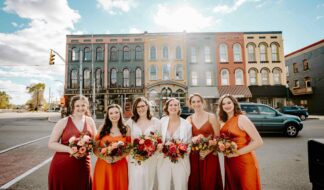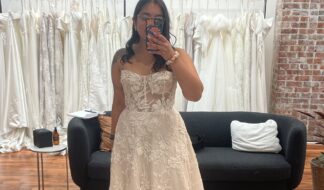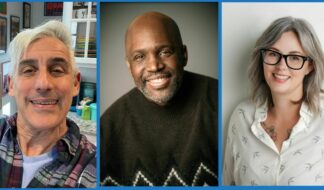"I'm pretty quick from when I arrive until when I'm done," Tom Atwood says as he lounges in one of six black mesh chairs in his living room. He is, of course, referring to his prompt and informal work ethic that's helped craft his photography collection of gay men in their New York homes.
Perhaps it was props from old films, or artificial fruits spread throughout his house, or maybe it was an execution chair in his downstairs hallway, but film director John Waters, who's featured on the cover of Atwood's book "Kings In Their Castles," was one of the most appealing personas Atwood has photographed. "As I progressed to different areas of his house, it was like peeling back layers of an onion," Atwood says. "I could see different elements of his personality."
Waters, along with other popular personas such as author Michael Cunningham and designer Todd Oldham, appear in "Kings In Their Castles" as a tribute to gradually disappearing urban bohemians, beatniks, mavericks and iconoclasts.
Kings In Their Castles Tom Atwood"I felt like there's a group of older gay men in many of our cities that were very vibrant in the 60s and 70s," Atwood says. "They sort of led this counter culture and I feel like through assimilation they're sort of disappearing and it's kind of a loss. I wanted to document that breed of older, progressive gay men."
In an industry where risque gay photography books dominate, Atwood decided to take the road less traveled and keep the 75-page collection G-rated. "So many books have men lounging nude on the beach," Atwood says. "I wanted to show us as real people and show all of our complexities."
Focusing on the quirky and unusual, Atwood discovered an empty dog cage in the middle of publishing executive Jonathan Burnham's living room and took a snapshot of him inside of it. "He had this cage there; he didn't have a dog. I don't know if it was a dog cage or a human S&M cage," Atwood says, laughing, "but I just thought it was interesting. I thought it would be a kind of funny role reversal."
When Atwood walked up to the home of Kai of As Four, who have been featured in Vogue and whose fashions are frequently worn by Bjork, he was thrown, from one of their windows, a little pouch with a key inside that opened their front door. Their living room – also the showroom for their fashion designs – is, like the rest of the house, painted entirely in silver with metallic knick-knacks and furniture, including wheel chairs, throughout.
Award-winning writer Andrew Solomon, whose townhouse is nothing short of visually stunning, has a green kryptonite-looking room near the top story. "It looked like it came from a Cuban painting," Atwood recalls.
Like his subjects, Atwood's West Hollywood apartment mixes the eccentric with the modern and sentimental. Overlooking Spanish rooftops, the airport and an old building where Jodie Foster and Bette Davis used to live, his place holds personal memories, like a set of antlers from a deer his father shot in Vermont and a large, formal antique secretary passed down from his parents. Among his most cherished pieces: fancy chairs from Italy and a lamp from Paris.
{SI 1413}
Atwood, who studied economics at Harvard and attended University of Cambridge in England for graduate school, became interested in photography after his father gave him an instamatic camera as a child. While hiking with his father in Vermont, he took a snapshot of his dad next to an enormous rock set atop a cliff.
"I had him way over to the corner. I had the rock as the main focus of the picture," Atwood says. While just getting acquainted with photography, he had no planned agenda at the time. But, looking back, he sees his father in the photo as part of the environment, where he's balancing his dad's figure and the rock. "I think it's kind of funny that this book is also about people and their environment," he says.
Completely self-taught through trial and error, Atwood uses seven or eight 35mm roles of 36 exposure film during each photo shoot. He doesn't crop the photos, he uses a small light source and minimal equipment so the subjects don't feel invaded.
"I kind of see photography as a social, interpersonal process; like an interaction between the personality of the subject and the photographer," he says. He's aware some people get nervous in front of the camera; some even change their expressions and movements. "Through a constant dialogue I try to sort of ensure they relax … and try to make them forget the camera is there. It's more reflective of real life or who they really are," he says.
Topics:
Guides










